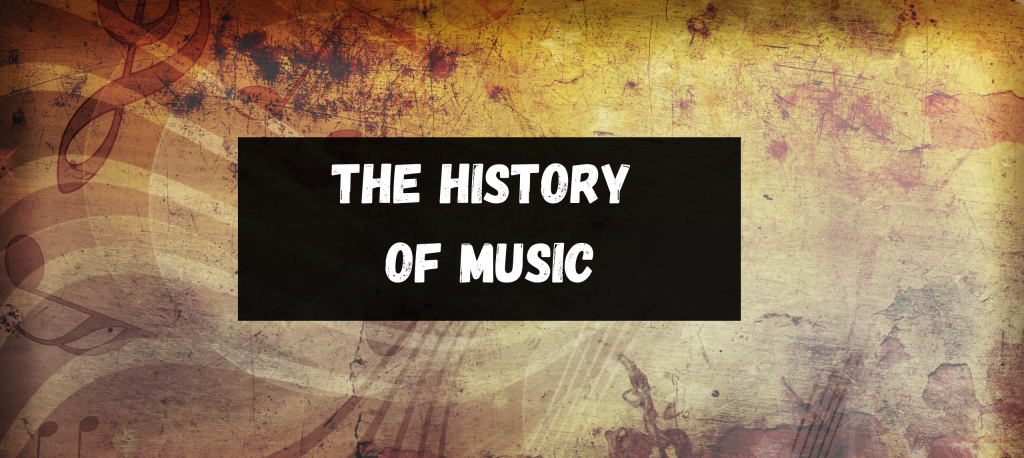August 22, 2023
Howard
Bluegrass music is a genre of American roots music that originated in the mid-20th century, drawing heavily from traditional English, Scottish, and Irish ballads and tunes. Characterised by string instruments like the banjo, fiddle, and mandolin, it often features vocal harmonies and a unique “high lonesome” sound. Bluegrass has become a distinctive and cherished part of the global musical landscape, with influences ranging from blues to jazz.
Bluegrass, a genre often eclipsed by its more well-known cousins like country and folk, has a rich and captivating history that resonates with music enthusiasts across the globe. Rooted in the traditions of the American South, Bluegrass has woven its way into various musical landscapes, including our own in Britain. But what exactly is Bluegrass music, and what sets it apart from other musical forms? The answers lie in its unique characteristics and thematic depth, which we shall explore in this article.
Whether you’re a seasoned Bluegrass fan or a newcomer eager to delve into this harmonious world, our comprehensive overview will guide you through the essence of the genre, its core characteristics, and the prominent themes that have shaped its evolution. From the twang of the banjo to the harmonious blend of vocals, Bluegrass offers a musical experience unlike any other. So grab a cup of tea, settle in, and allow us to take you on an auditory journey that promises to be as engaging and intricate as the music itself. You will want to experience what’s ahead in this intriguing exploration.
Exploring the Roots: A Historical Perspective
Early Beginnings of Bluegrass
The early roots of Bluegrass can be traced back to the American South, where it blossomed from a fusion of traditional English, Scottish, and Irish folk music. Migrants from the British Isles carried a rich tapestry of ballads and fiddle tunes interwoven with African-American blues and jazz rhythms. The birth of Bluegrass is often credited to Bill Monroe and his Blue Grass Boys in the 1940s, whose energetic performances and unique instrumentation set the stage for this vibrant genre.
Evolution into Newgrass and International Influence
Bluegrass continued to evolve through the decades, giving rise to a subgenre known as Newgrass in the 1960s and ’70s. This modern interpretation retained the core elements of Bluegrass but embraced more progressive sounds, including rock and pop influences. The genre’s appeal transcended borders, reaching music lovers even here in Britain, where it resonated with our folk traditions. International Bluegrass festivals and collaborations with British artists further cemented the genre’s global footprint.
Significant Milestones and Music Centers
As Bluegrass flourished, it established significant milestones and found homes in various music centres across the United States. Creating the Bluegrass Music Hall of Fame & Museum and the annual IBMA World of Bluegrass festival marked key moments in celebrating and preserving this unique art form. Closer to our shores, the influence of Bluegrass can be felt in the British folk scene, with festivals and venues dedicated to its performance. Bluegrass music’s rich history is not just a chronicle of a genre but a living, breathing tradition that continues to inspire musicians and audiences alike.
The exploration of Bluegrass’s historical perspective provides a fascinating insight into a genre that has not only stood the test of time but has also expanded its horizons, reaching hearts and ears across the globe. Its roots in our British heritage, evolution, and significant milestones make Bluegrass a compelling subject for music enthusiasts and historians. Join us as we continue to unravel the melodies, stories, and cultural impact of this remarkable genre.
Iconic Bluegrass Tunes: Examples and Analysis
Analysis of 7 Renowned Tracks
With its distinctive sound and dynamic storytelling, bluegrass music has given rise to many iconic tunes that have transcended generations. To truly appreciate the genre’s complexity and charm, let’s embark on an analytical journey through seven renowned tracks, each encapsulating a different facet of Bluegrass.
Interpretation of Various Songs (e.g., “Rocky Top,” “Foggy Mountain Breakdown”)
- “Rocky Top” by Osborne Brothers: A lively anthem that vividly depicts Appalachian life, “Rocky Top” symbolises Tennessee’s cultural heritage. Its catchy melody and relatable lyrics resonate with Bluegrass purists and modern audiences.
- “Foggy Mountain Breakdown” by Foggy Mountain Boys: This instrumental classic, led by Earl Scruggs’ masterful banjo playing, has become synonymous with Bluegrass. It’s fast-paced rhythm and intricate picking patterns testify to the genre’s technical prowess.
- Additional Tracks: The exploration continues with other remarkable songs such as “I Saw The Light” by Bill Monroe, “Nine Pound Hammer” by Tony Rice, and more. Each tune offers a unique narrative and musical experience that showcases Bluegrass’s diversity and depth.
Connection to Other Musical Forms and Genres
Bluegrass is not isolated; it combines various musical forms and genres. Its roots in traditional British folk music, its flirtation with jazz improvisation, and its embrace of country and rock elements create a rich tapestry of sound. Bluegrass’s ability to meld with other musical forms has led to intriguing collaborations and cross-genre experiments, allowing it to maintain its relevance and appeal in today’s diverse musical landscape.
In Britain, where the echoes of folk traditions still linger, Bluegrass finds a natural resonance. Its connection to our musical heritage and its continuous evolution makes exploring iconic Bluegrass tunes captivating for musicians and listeners alike. Whether tapping your foot to the lively beats of “Rocky Top” or losing yourself in the intricate melodies of “Foggy Mountain Breakdown,” Bluegrass invites you to experience a world rich in history, emotion, and musical mastery. Join us as we delve further into this fascinating genre, where the instruments sing, and the stories come alive.

The Maestros: Profiles of Leading Bluegrass Musicians
In-depth Look at 5 Top Artists
The allure of Bluegrass music lies not just in its melodies and rhythms but in the gifted musicians who breathe life into it. Let’s embark on an enlightening journey to explore the profiles of five top Bluegrass artists who have shaped the genre. These maestros have mastered their craft and pushed the boundaries of Bluegrass, infusing it with their unique styles and creativity.
Contributions and Styles (e.g., Bill Monroe, Earl Scruggs)
- Bill Monroe: Known as the “Father of Bluegrass,” Bill Monroe’s innovative mandolin playing and distinctive singing have set the standards for the genre. His contributions to Bluegrass are monumental, merging traditional and modern elements to create a sound that continues to inspire.
- Earl Scruggs: A virtuoso banjo player, Scruggs revolutionised the instrument with his three-finger picking style. His composition “Foggy Mountain Breakdown” is considered a Bluegrass anthem, showcasing the genre’s technical brilliance.
- Additional Artists: The profiles of other luminaries such as Alison Krauss, Ralph Stanley, and Alison Brown reveal diverse talents and a dedication to keeping Bluegrass vibrant and relevant. Their styles have contributed to the rich tapestry of the genre, each leaving an indelible mark on the world of music.
Influence on Contemporary Artists
The legacy of these Bluegrass maestros extends far beyond their works, profoundly influencing contemporary artists across genres. From country stars to British folk musicians, the techniques and emotions embedded in Bluegrass have found echoes in various musical landscapes. Younger musicians continue to draw inspiration from these legends, interpreting Bluegrass in fresh and exciting ways. The genre’s timeless appeal, coupled with its adaptability, ensures that the influence of these masters resonates in the music of today and tomorrow.
Here in Britain, where musical traditions are both celebrated and reinvented, the profiles of these leading Bluegrass musicians offer a fascinating glimpse into a genre that has transcended geographical boundaries. Their artistry, innovation, and impact on contemporary music make the exploration of Bluegrass a rich and rewarding experience. Whether you’re a musician seeking inspiration or a music lover eager to delve deeper, the stories and contributions of these maestros beckon you to explore a world where skill meets soul and tradition meets innovation. Join us as we continue to unravel the multifaceted world of Bluegrass, a genre that sings to the heart and dances with the spirit.
Instruments and Techniques: The Sound of Bluegrass
Traditional Instruments Employed in Bluegrass
In Bluegrass, instruments are not mere tools but voices that tell stories, convey emotions and create a distinctive musical tapestry. A blend of traditional instruments sculpts the genre’s unique sound, each adding its flavour to the melody.
- Banjo: Synonymous with Bluegrass, the banjo’s twangy resonance and rapid picking patterns are central to the genre’s identity.
- Fiddle: Drawing from British and Celtic roots, the fiddle brings warmth and expressiveness, often leading in melodic lines.
- Mandolin: Known for its bright, crisp sound, it provides rhythm and melody, a versatile addition to the ensemble.
- Guitar: From driving rhythms to soulful solos, the guitar’s multifaceted role anchors the Bluegrass sound.
- Dobro: The resonator guitar, or dobro, adds a bluesy touch, its sliding tones enriching the musical palette.
- Upright Bass: Providing the heartbeat of Bluegrass, the upright bass lays the rhythmic foundation and harmonious support.
These instruments, some directly connected to our British musical heritage, combine to create the intricate and dynamic sound that defines Bluegrass.
Techniques and Styles in Performance
The beauty of Bluegrass extends beyond the instruments themselves to the techniques and styles employed by the musicians. From the renowned “Scruggs style” three-finger banjo picking to the expressive bowing of the fiddle, the artistry lies in the details.
- Picking Patterns: Intricate fingerpicking techniques on the banjo and mandolin offer a complex texture and rhythmic drive.
- Harmonising: Vocal harmonies, often in close intervals, add depth and richness to the storytelling in Bluegrass.
- Improvisation: Borrowing from jazz, improvisation plays a key role, allowing musicians to infuse their personality into performances.
- Collaborative Playing: Bluegrass emphasises ensemble playing, where each instrument shines in solos but blends in harmonious collaboration.
In Britain, where musical craftsmanship is held in high regard, the instruments and techniques of Bluegrass offer a fascinating exploration of skill, creativity, and tradition. They invite musicians and listeners alike to delve into a world where technique meets passion and heritage meets innovation.
Instruments and Techniques: The Sound of Bluegrass
Traditional Instruments Employed in Bluegrass
Bluegrass music’s rich and soul-stirring sound is crafted through a blend of traditional instruments, each lending a distinct voice to the melody.
- Banjo: Often considered the heartbeat of Bluegrass, the banjo’s lively twang provides a unique texture that is both rustic and engaging.
- Fiddle: With roots in the British Isles, the fiddle adds emotion and warmth, playing lead melodies and harmonious accompaniments.
- Mandolin: The sharp, clear sound of the mandolin offers rhythm and melody, contributing to the genre’s intricate musical weave.
- Guitar: The guitar serves as the robust backbone of Bluegrass, offering both rhythmic drive and melodic expression.
- Dobro: This resonating guitar enriches the ensemble with its bluesy undertones, adding depth and colour.
- Upright Bass: The deep resonance of the upright bass lays the foundation, grounding the ensemble in rhythm and harmony.
These instruments, woven together, create a quintessentially Bluegrass soundscape resonating with listeners from Kentucky to Kensington.
Techniques and Styles in Performance
The artistry of Bluegrass extends beyond the instruments to the masterful techniques and styles that define the performances.
- Picking Patterns: Techniques such as the famed “Scruggs style” banjo picking add complexity and drive to the rhythm, capturing the essence of Bluegrass.
- Harmonising: Vocal harmonies, often tightly woven, contribute a rich and layered texture, enhancing the storytelling quality of the music.
- Improvisation: A nod to jazz influences, improvisation allows musicians to infuse their flair, making each performance uniquely vibrant.
- Collaborative Playing: Bluegrass celebrates a collaborative spirit, where musicians take turns in the spotlight but harmonise seamlessly, creating a cohesive musical experience.
For British enthusiasts, the techniques and styles of Bluegrass offer a fascinating exploration into a genre that marries tradition with innovation. Whether through the lively strumming of a banjo or the emotive pull of a fiddle, the sound of Bluegrass invites you to discover a world where music is a living, breathing celebration of heritage, skill, and creativity. Join us as we continue to explore this captivating genre, where every note tells a story, and every performance is a journey into the soul of American roots music.
Bluegrass Today: A Global Phenomenon
The soul-stirring melodies of Bluegrass have transcended their American roots, resonating with audiences across the globe. Today, Bluegrass is more than a genre; it’s a global phenomenon that continues to evolve, inspire, and connect cultures.
Bluegrass Across the World: Trails, Halls of Fame, and Museums
Bluegrass music has not only found its way into the hearts of listeners but also into various trails, halls of fame, and museums dedicated to preserving and celebrating its rich heritage.
- Trails: From the Blue Ridge Music Trails of North Carolina to musical journeys in our British countryside, Bluegrass trails offer a musical exploration of history and culture.
- Halls of Fame: The Bluegrass Music Hall of Fame & Museum honours the genre’s greats, preserving the legacy for future generations.
- Museums: Across the world, museums dedicated to Bluegrass showcase instruments, recordings, and memorabilia, bringing the music to life in a tangible way.
These landmarks are testaments to Bluegrass’s global appeal, connecting fans and musicians across continents.
Studies, Magazines, and Books on Bluegrass
The academic and literary world has also embraced Bluegrass, reflecting its cultural significance.
- Studies: Universities and institutions have delved into the genre’s history, techniques, and socio-cultural impact, adding scholarly depth to our understanding.
- Magazines: Publications dedicated to Bluegrass offer insights, reviews, and interviews, nurturing a community of enthusiasts.
- Books: From biographies of Bluegrass legends to explorations of specific eras and styles, books on Bluegrass enrich our knowledge and appreciation.
These scholarly pursuits allow us to explore Bluegrass from various perspectives, enriching our connection to this multifaceted genre.
Modern Interpretations and Recordings
In today’s dynamic musical landscape, Bluegrass continues to evolve through modern interpretations and recordings.
- New Artists: Contemporary musicians are reimagining Bluegrass, infusing it with elements from genres like rock, jazz, and even electronic music.
- Recordings: Modern recordings capture the essence of Bluegrass, preserving traditional sounds while embracing new technologies and production techniques.
- Global Reach: From American heartlands to British folk festivals, Bluegrass’s modern renditions resonate with a new generation of listeners.
These modern expressions breathe fresh life into Bluegrass, ensuring its relevance in a rapidly changing musical world.
The Cultural Impact and Legacy of Bluegrass
Bluegrass music, with its rich tapestry of sound and storytelling, has left an indelible mark on the cultural landscape. Its influence reaches far beyond its Appalachian origins, resonating with people across regions and shaping other musical genres. Let’s explore Bluegrass’s cultural impact and enduring legacy, and consider its promising future.
Connection to Regional Culture
The roots of Bluegrass are deeply intertwined with regional culture, particularly within the Appalachian Mountains and the Blue Ridge Music Trails.
- Cultural Heritage: Bluegrass preserves and celebrates the traditions, values, and stories of communities, reflecting the region’s soul.
- Festivals and Trails: Events such as the Blue Ridge Music Trails offer immersive experiences, connecting audiences to the heart of Appalachian culture.
- Global Resonance: This connection to place and history has found echoes even in British folk traditions, demonstrating the genre’s universal appeal.
Bluegrass’s ability to encapsulate regional culture while transcending geographical boundaries makes it a unique and valuable cultural asset.
Popular UK Bluegrass Festivals
- Didmarton Bluegrass Festival – Located in the Cotswolds, this is one of the largest and longest-running bluegrass festivals in the UK. It attracts international and local talent alike.
- Cornish Bluegrass Festival – Held in Cornwall, this festival brings together bluegrass enthusiasts from all over the UK and beyond for a weekend of live music and workshops.
- Sore Fingers Summer School – While primarily an instructional event held in the Cotswolds, this week-long gathering features jam sessions and concerts, making it an important event in the UK bluegrass calendar.
- Beardy Folk Festival – Located in Shropshire, this festival features a broader folk lineup but often includes bluegrass bands and artists.
- Fire in the Mountain – Taking place in Aberystwyth, Wales, this festival blends traditional folk with bluegrass and old-time music.
- Moniaive Michaelmas Bluegrass Festival – Situated in Dumfries and Galloway, Scotland, this festival is a celebration of bluegrass and related genres.
- Gower Bluegrass Festival – This is a smaller, more intimate festival in Wales, featuring a variety of bluegrass bands and jam sessions.
Influence on Other Musical Genres
Bluegrass’s impact is not confined to its genre; it has significantly influenced other musical styles.
- Country Music: Bluegrass has deeply influenced country music, sharing themes, instruments, and storytelling techniques.
- Folk and Rock: Elements of Bluegrass can be found in British folk music and American rock, showcasing its versatile and far-reaching impact.
- Contemporary Fusion: Modern artists blend Bluegrass with genres like jazz and pop, creating fresh and exciting musical expressions.
The cross-genre influence of Bluegrass attests to its vitality and creativity, shaping the musical landscape in diverse and unexpected ways.
The Future of Bluegrass Music
As we look to the future, Bluegrass shows no signs of fading into the annals of history.
- Innovation: New generations of musicians are embracing Bluegrass, infusing it with modern sensibilities while honouring its roots.
- Education: Educational initiatives are nurturing young talent, ensuring the continuation of this rich musical tradition.
- Global Community: With fans and musicians worldwide, including here in Britain, Bluegrass’s future is vibrant and promising.
Bluegrass’s legacy is a living, evolving testament to the power of music to connect, inspire, and endure.
Resources and Further Exploration
For those captivated by the rich world of Bluegrass music, the journey does not end here. Whether you’re a listener enchanted by its melodies or an aspiring musician eager to delve into its techniques, a wealth of resources awaits. From recordings that capture the genre’s essence to educational opportunities that foster talent, the exploration of Bluegrass is as multifaceted as its sound.
A Guide to Bluegrass Recordings
Discovering the gems of Bluegrass music is an auditory adventure that can transport you to the heartlands of America or resonate with our own British folk traditions.
- Classic Albums: Delve into the masterpieces of Bluegrass legends, such as Bill Monroe or the Stanley Brothers, to experience the genre in its purest form.
- Modern Interpretations: Explore contemporary recordings that blend traditional Bluegrass with modern influences, offering fresh perspectives.
- British Connections: Remember recordings by British artists who have embraced Bluegrass, reflecting the genre’s international appeal.
This guide to Bluegrass recordings serves as a musical compass, guiding both newcomers and fans through a sonic landscape rich in tradition and innovation.
Recommended Readings and Studies
For those eager to deepen their understanding, a collection of books, studies, and literary resources offers scholarly insights into Bluegrass.
- Biographies: Learn about the lives and legacies of Bluegrass icons through well-researched biographies.
- Academic Studies: Universities and institutions offer in-depth explorations into Bluegrass’s history, techniques, and cultural significance.
- Magazines and Journals: Stay abreast of the latest trends, reviews, and interviews through dedicated Bluegrass publications.
These readings and studies provide a comprehensive view of Bluegrass, enriching your appreciation and knowledge of this compelling genre.
Educational Opportunities for Aspiring Musicians
For budding musicians inspired by the allure of Bluegrass, educational opportunities abound.
- Music Schools: Institutions offering specialised Bluegrass programmes cultivate talent through expert guidance and hands-on experience.
- Workshops and Masterclasses: Engage with masters of the genre through workshops and masterclasses in the US and Britain.
- Online Resources: Utilise online tutorials and courses to hone your skills at your own pace, connecting with a global community of Bluegrass enthusiasts.
These educational avenues open doors to artistic growth, nurturing the next generation of Bluegrass musicians and enthusiasts.
Conclusion: Reflecting on the Essence of Bluegrass
As we reach the final notes of our exploration into Bluegrass music, we find ourselves reflecting on a genre that is both timeless and ever-evolving. Bluegrass is not simply a style of music; it’s a rich tapestry of history, culture, innovation, and emotion that continues to resonate worldwide, including here in Britain. Let’s summarise the key points and consider this captivating genre’s lasting appeal and continual evolution.
Summary of Key Points
- Historical Roots: Bluegrass’s origins lie in the fusion of British and Irish folk music with American blues and jazz, giving birth to a unique sound.
- Iconic Artists and Tunes: Legends like Bill Monroe and Earl Scruggs shaped the genre, while songs like “Rocky Top” became anthems.
- Instruments and Techniques: The distinct blend of banjos, fiddles, mandolins, and innovative playing techniques defines the Bluegrass sound.
- Global Phenomenon: From regional trials to international influence, Bluegrass has become a global phenomenon, reflected in studies, recordings, and educational opportunities.
- Cultural Impact: Bluegrass’s influence on other musical genres and its connection to regional culture illustrate its broad cultural impact.
The Lasting Appeal and Continual Evolution of Bluegrass
Bluegrass’s lasting appeal lies in its ability to speak to universal human experiences through storytelling, melody, and emotion. Its connection to our British musical heritage adds a layer of familiarity and resonance.
- Continual Evolution: From traditional styles to modern interpretations, Bluegrass continues to evolve, embracing new influences while honouring its roots.
- Enduring Beauty: The genre’s technical prowess, heartfelt narratives, and community spirit ensures its continued relevance and allure.
The world of Bluegrass invites us to explore, learn, and feel. It beckons us to dance to its lively rhythms, reflect on its poignant stories, and celebrate its rich diversity. Whether you’re a musician, a historian, or music lover, Bluegrass offers a journey into a realm where the past meets the present, tradition meets innovation, and music meets the soul.
Thank you for joining us on this exploration of Bluegrass music. May its melodies continue to inspire, connect, and enrich our lives here in Britain and beyond. Whether through the strum of a banjo or the harmony of voices, Bluegrass’s essence remains a living testament to the power of music to transcend boundaries and touch hearts.
Peruse Your Peepers Over These!

Howard Head
I turn confused bass enthusiasts into bass gods through a simple and logical process.

















